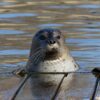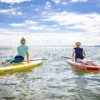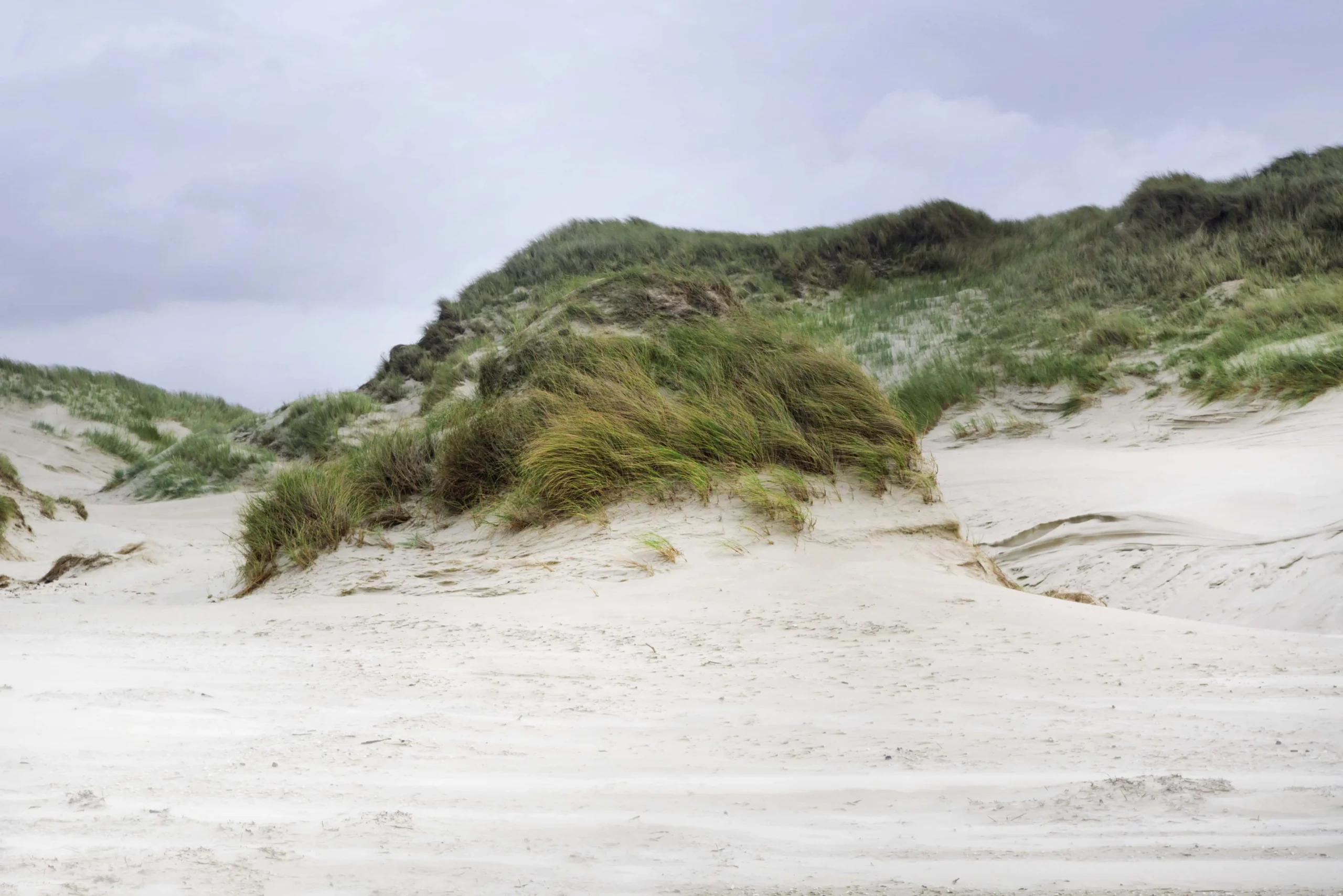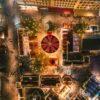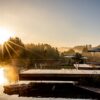Even if you’ve been here dozens of times, the North Sea is always worth a visit. Even if it’s just to feel the wind in your face. There is plenty to discover even in the off-season. Our editor Konrad spent time on Amrum and especially in the Amrum dunes – by day and by night.
It was “only” supposed to be a night hike in the dunes. Dark Blome, the dune guide for our small Amrum travel group, is very knowledgeable about constellations and the mystical and fairytale-like stories behind them. But the spectacle that is now unfolding before our wide-eyed gaze leaves even this unusually talkative northern German speechless. Almost a dozen bright points of light – significantly larger than the surrounding stars – pass over our heads in a ghostly procession, like a string of pearls. I admit that my first thought was also, “Are these the aliens (finally)?”
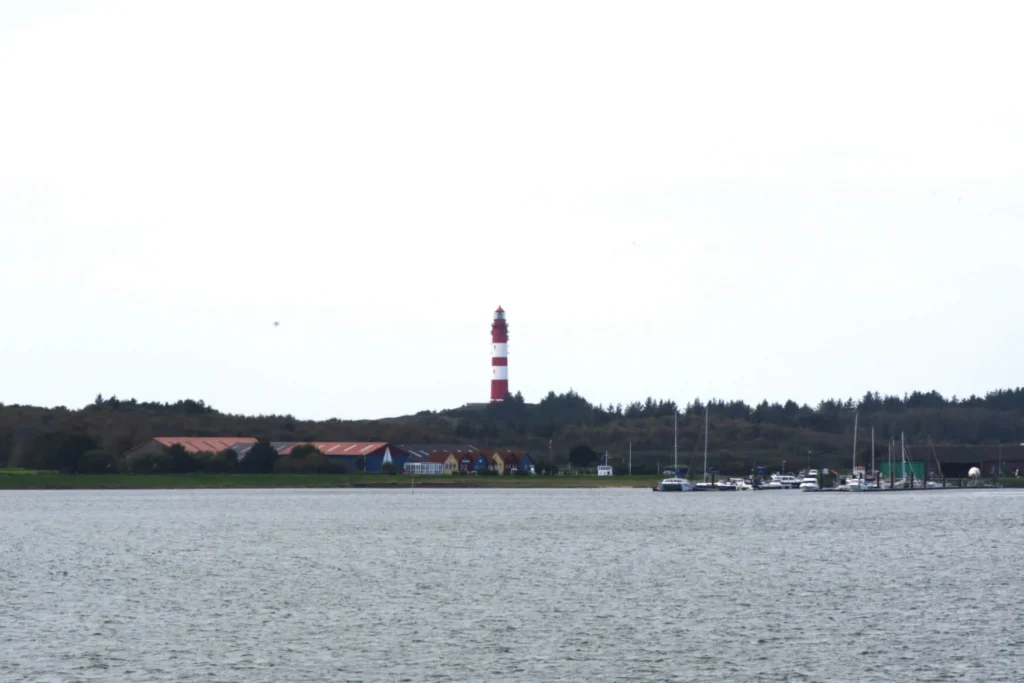
The explanation is much more mundane. “They are satellites that Musk has launched. Illuminated by the rest of the sun.” Dark’s enthusiasm is audibly limited. Since 2019, the controversial multibillionaire Elon Musk has been filling the sky above our heads with his Starlink satellites, which are supposed to enable cable-independent internet access worldwide. As of the end of October 2023, there were a good 5,000 of them. “If it continues at this rate, we won’t see any stars above the island at all soon,” grumbles the dune guide.
Best view for amateur astronomers
And that would be a real shame, because the sparkling starry sky is one of the highlights on the fourth largest North Frisian island of Amrum. Dark Blome – who should actually have the Nordic name “Dag”, but something went wrong with the birth certificate – knows the extensive dune landscape just as well as he knows the firmament. “The first celestial body you can see clearly is Venus. There!” he calls to our attention shortly after we have moved into the dunes at dusk. And indeed: following the dune guide’s finger, I can see our bright neighbor with the naked eye. Which I might otherwise have mistaken for a star.
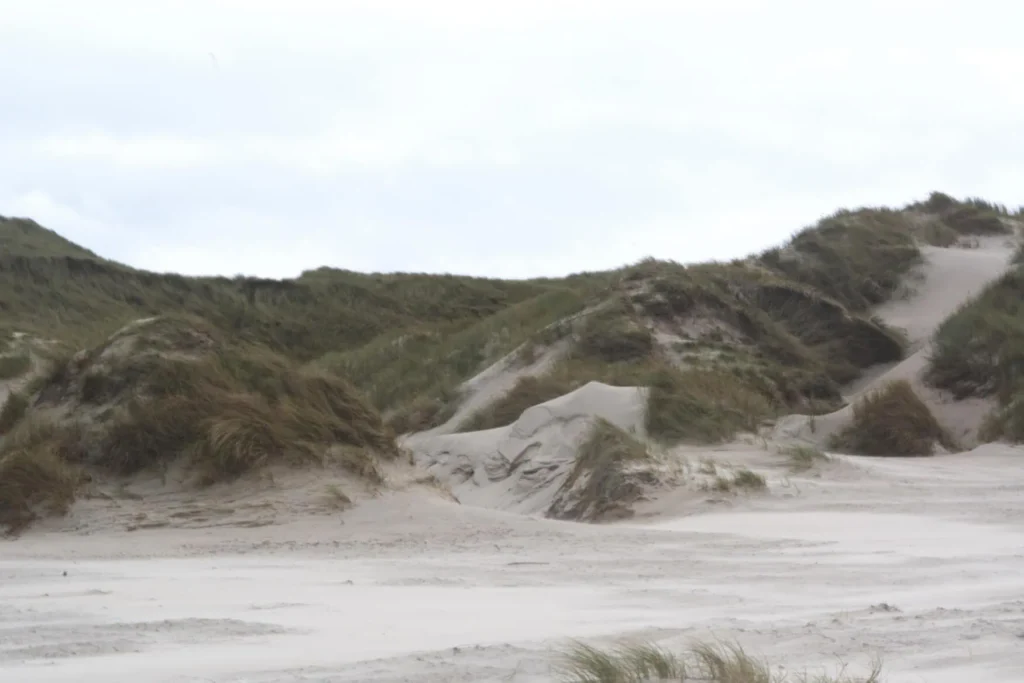
The constellations are the next topic of conversation. I can just about recognize the Little Dipper together with Polaris. But after that my knowledge of the constellations is limited. But Dark knows them all, along with the stories behind them. Whether it’s Pegasus, who sprang from the neck of the decapitated Medusa and into the sky, or Vega and Altair in the Summer Triangle, who, according to Japanese legend, as lovers, can only find each other once a year and are separated by the Milky Way for the rest of the year. Incidentally, the silvery-white band of stars can also be seen perfectly under the northern German night sky.

At the end of the hike, Dark leads us over the wooden walkways that have been built into the dune landscape to a viewing platform that is higher than all the surrounding sand hills. So we have the best view of all the beacons that the attentive eye can see along the North Sea coast. “Every lighthouse has an identifier,” the expert explains, “so that you can distinguish them at night at sea.” The Amrum lighthouse, for example, has the identifier “flashing light white 7.5”, which means a short white flash every seven and a half seconds. It shows once again: travel is the best education.
Nature that needs to be protected
The next morning, I stroll through Norddorf, the third largest and northernmost of the five villages on Amrum. Even now, in the low season, there is a hustle and bustle in the typical Frisian village. As is typical for North Sea tourism, there are countless holiday apartments and guesthouses on Amrum, as well as some larger wellness hotels. Most of the guests I meet on my morning walk are families with small children, perhaps spending their first vacation by the sea. Collecting their first shells and wiggling themselves ankle-deep into the soft mudflats under parental supervision. But whimsical nature lovers like me are also drawn to the far north. And to the unique dune landscape on this island.
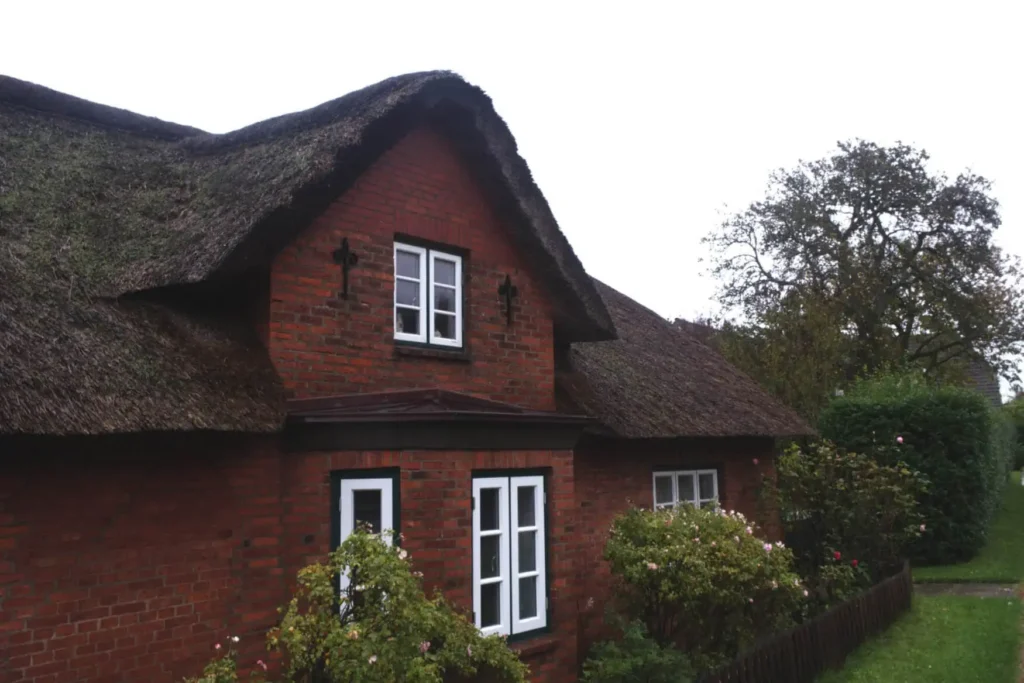
So let’s head out of Norddorf and into the Amrum Dunes Nature Reserve! We meet Kira at the nature center, right at the entrance to Norddorfer Strand. The 19-year-old is spending a year volunteering for the environment with the nature and heritage association “Öömrang Ferian”, which is committed to preserving the Frisian language and culture as well as protecting nature. The nature center also offers exciting courses for young naturalists. Here they can learn everything worth knowing about the mudflats and the island in a playful way or create small works of art with beach materials. But we are heading into the dunes with our expert guide. That’s because they are not to be walked on just like that. The characteristically green beach grass, which keeps the sand in place, is too delicate.
A pleasure meeting you, Blanker Hans
The dunes are the Amrumers’ life insurance, serving as a natural dike and protection against the forces of nature. Which, in the form of the rough North Sea, break against the western side of the island with unrelenting force. “When we see the sea, the sea sees us,” Kira summarizes the danger succinctly. And for a moment a shiver runs down my spine. I can’t help but think of the mystical North Sea island of Rungholt, which was swallowed up by the sea in one night in 1634 during a storm tide. When the “Blanke Hans” shows itself, as the coastal inhabitants call the North Sea during a storm, you quickly learn to respect nature.
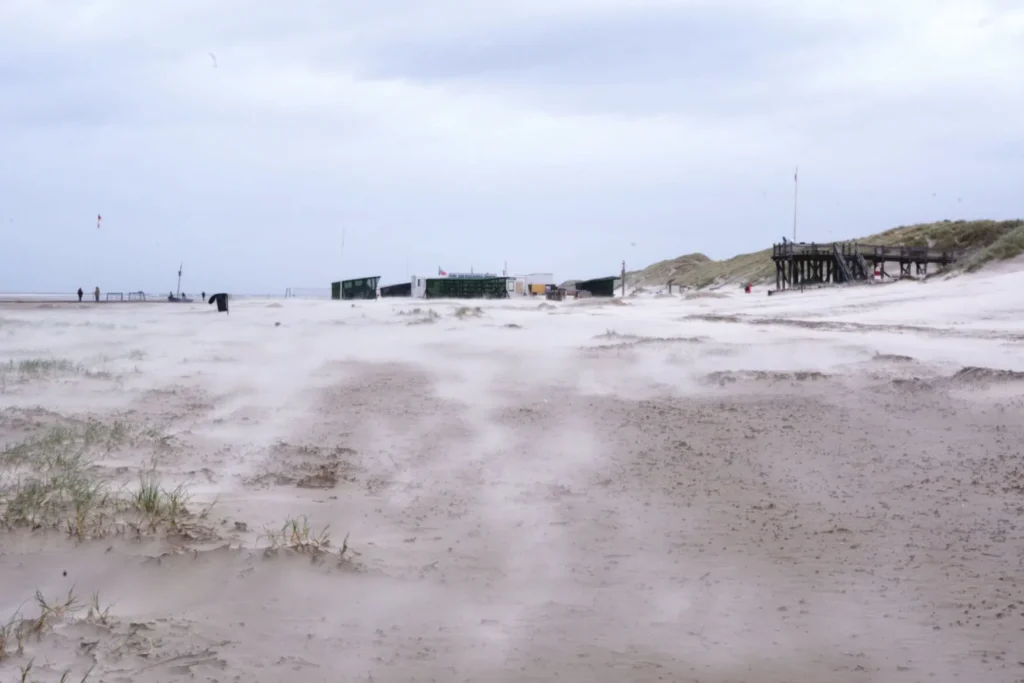
The Blanke Hans is also hard at work during our walk along the beach. The “Kniepsand”, which is particularly small-grained, fine sand and typical for Amrum, is actually a wonderfully soft surface for lying on when you are sunbathing on the beach here in summer and letting the sand trickle through your toes – and inevitably having some of it in your shoes for months afterwards. Today, however, thanks to the extreme wind speeds, I get a free facial scrub. And a workout on top of that as we fight our way along the beach against the wind. But I’m not complaining. I wanted nature, and I’m getting nature in abundance.
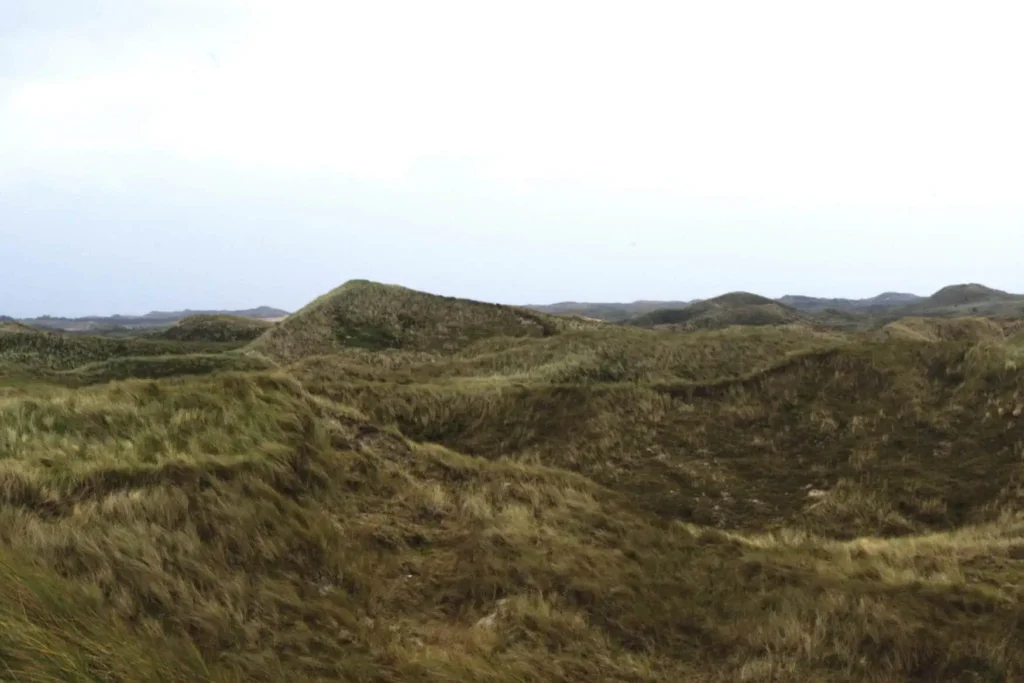
Up close and personal with the dune dwellers
After a short time, however, we turn off into the dunes via the “Himmelsleiter”. Although it is forbidden to enter the dunes themselves in order to protect the flora and fauna, the wide wooden walkways, which we also used during yesterday’s night walk, lead right across the stages. Now, in daylight, the unique natural landscape reveals itself in all its glory. Like a second, bright green shining sea, the stems of the beach grass sway and billow back and forth, an almost hypnotic sight. If only it weren’t so incredibly windy. But as soon as we descend from the dune ridge into the landscape and follow the boardwalk, the wind, which had just driven tears into our eyes, stops as if by magic.
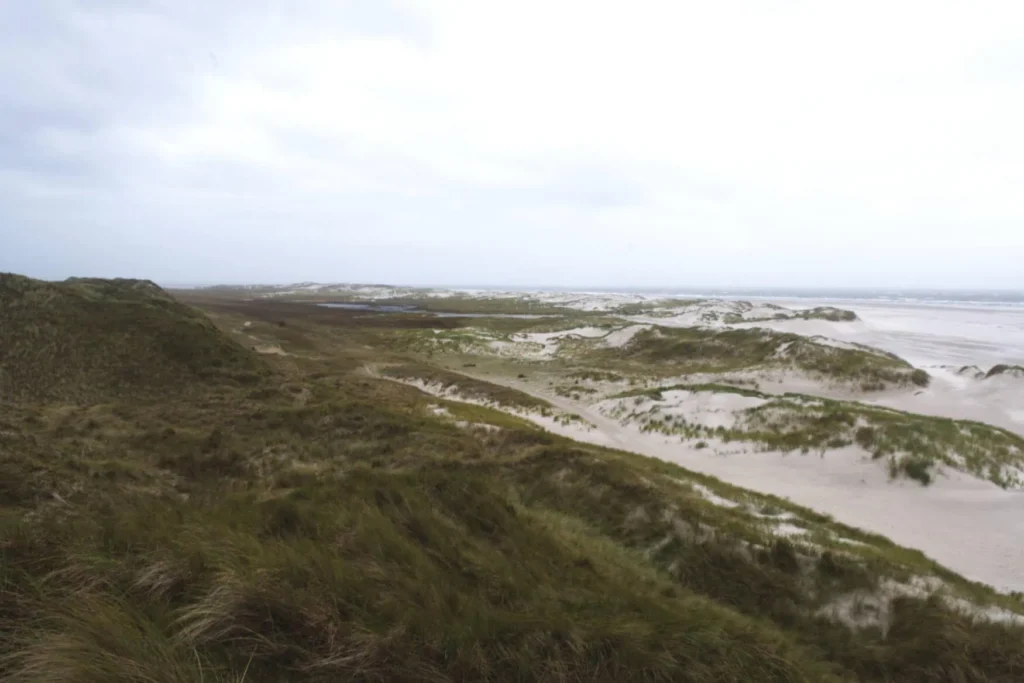
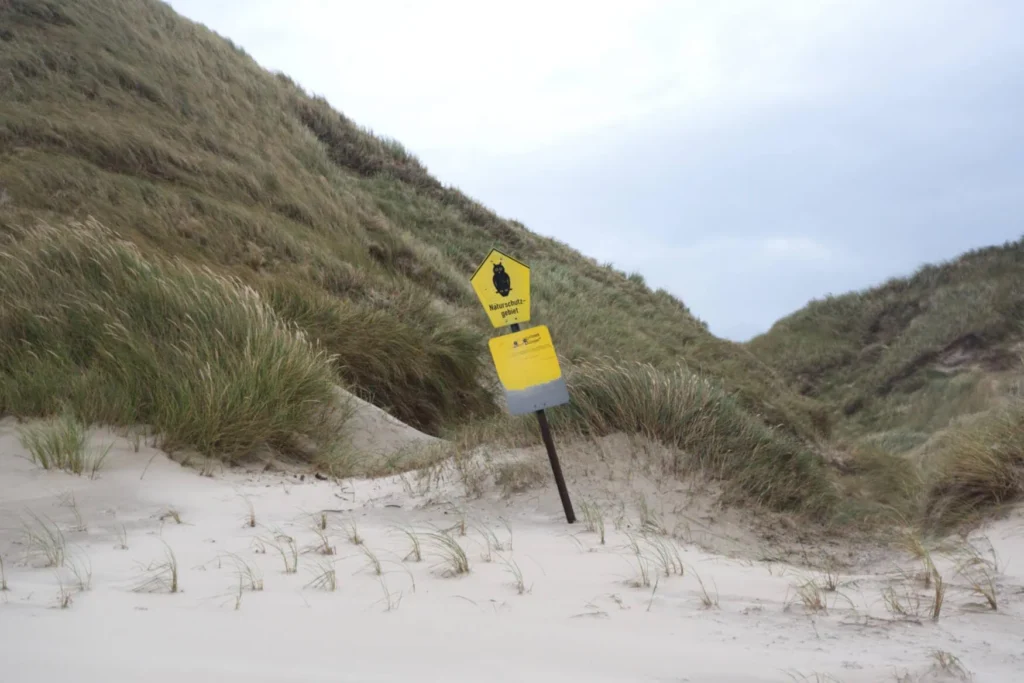
We walk single file over the slightly sandy wooden planks, but always with a firm, sure step. Shortly before the end of our hike, we pass some strange rocks that jut out of the sand to the left of the path. “This was a Stone Age burial mound,” Kira explains, a prehistoric burial ground. “In the past – or even today – people suspected that the ‘Onerbäänke’ live here under the dunes.” These goblin-like figures of legend are said to bring good luck to a household if you get on well with them. But they can also cause mischief and disaster if angered. I reflect on my visit to the island with concern. But I think I did everything right. And who knows: maybe those lights in the sky last night weren’t satellites either, but just a couple of flying Onerbäänke.

Good to know
The island of Amrum is and remains a popular travel destination for Germans. In the high season, the beds are sometimes booked up to 97 percent capacity, so early planning is worthwhile. Many guesthouses and holiday homes are family-friendly. Larger hotels, such as the Seeblick Genuss und Spa Resort in Norddorf, also offer a wide range of wellness services. The only way to get to the island is by ferry from Pellworm, Schlüttsiel or Amrum (ferry times depend on the tides and can be viewed online). If you are traveling by car, you should reserve in advance. By train, you can travel directly from Niebüll to Dagebüll Mole and board the ferry without a reservation.
